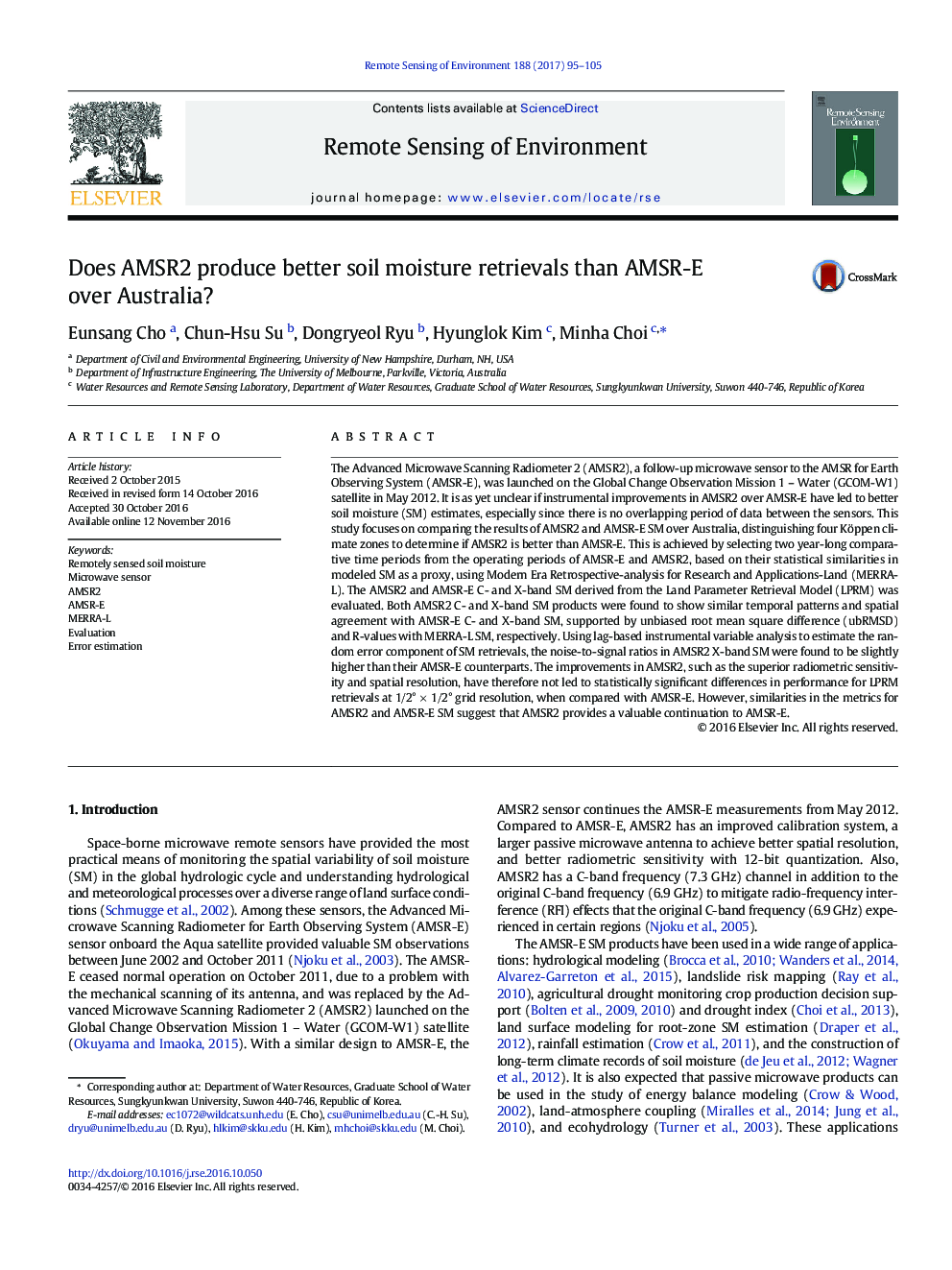| Article ID | Journal | Published Year | Pages | File Type |
|---|---|---|---|---|
| 5754756 | Remote Sensing of Environment | 2017 | 11 Pages |
Abstract
The Advanced Microwave Scanning Radiometer 2 (AMSR2), a follow-up microwave sensor to the AMSR for Earth Observing System (AMSR-E), was launched on the Global Change Observation Mission 1 - Water (GCOM-W1) satellite in May 2012. It is as yet unclear if instrumental improvements in AMSR2 over AMSR-E have led to better soil moisture (SM) estimates, especially since there is no overlapping period of data between the sensors. This study focuses on comparing the results of AMSR2 and AMSR-E SM over Australia, distinguishing four Köppen climate zones to determine if AMSR2 is better than AMSR-E. This is achieved by selecting two year-long comparative time periods from the operating periods of AMSR-E and AMSR2, based on their statistical similarities in modeled SM as a proxy, using Modern Era Retrospective-analysis for Research and Applications-Land (MERRA-L). The AMSR2 and AMSR-E C- and X-band SM derived from the Land Parameter Retrieval Model (LPRM) was evaluated. Both AMSR2 C- and X-band SM products were found to show similar temporal patterns and spatial agreement with AMSR-E C- and X-band SM, supported by unbiased root mean square difference (ubRMSD) and R-values with MERRA-L SM, respectively. Using lag-based instrumental variable analysis to estimate the random error component of SM retrievals, the noise-to-signal ratios in AMSR2 X-band SM were found to be slightly higher than their AMSR-E counterparts. The improvements in AMSR2, such as the superior radiometric sensitivity and spatial resolution, have therefore not led to statistically significant differences in performance for LPRM retrievals at 1/2° Ã 1/2° grid resolution, when compared with AMSR-E. However, similarities in the metrics for AMSR2 and AMSR-E SM suggest that AMSR2 provides a valuable continuation to AMSR-E.
Related Topics
Physical Sciences and Engineering
Earth and Planetary Sciences
Computers in Earth Sciences
Authors
Eunsang Cho, Chun-Hsu Su, Dongryeol Ryu, Hyunglok Kim, Minha Choi,
